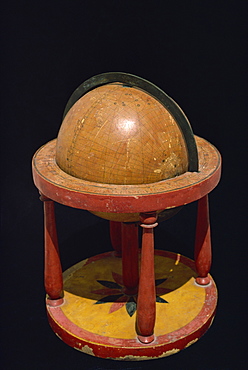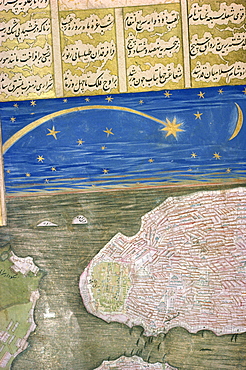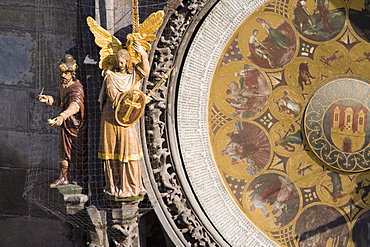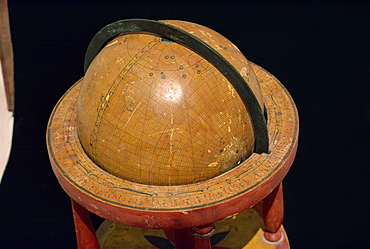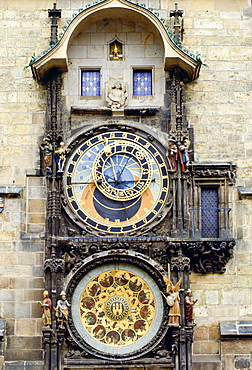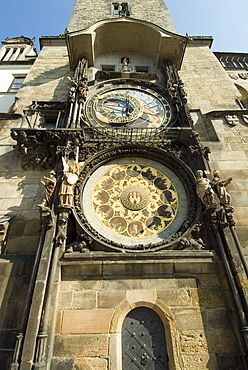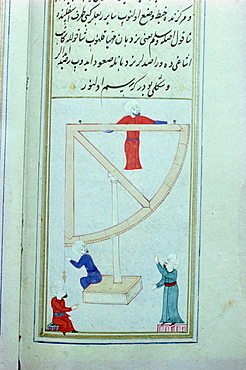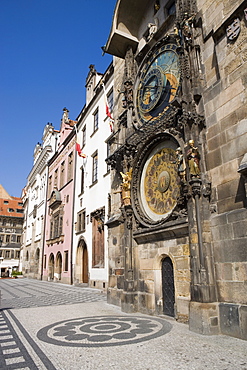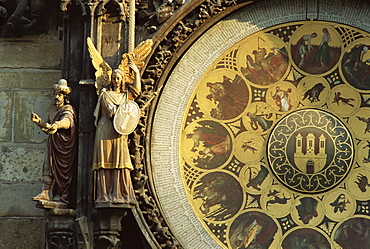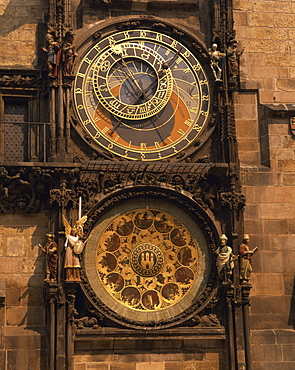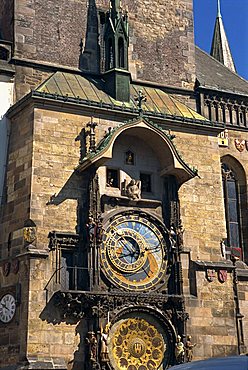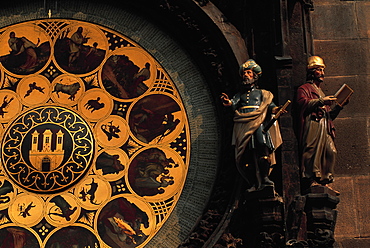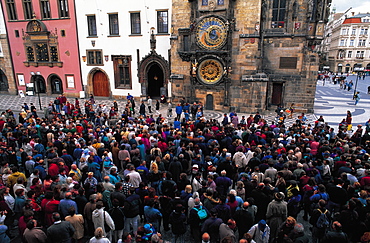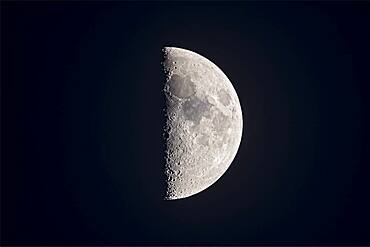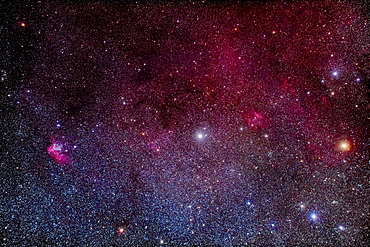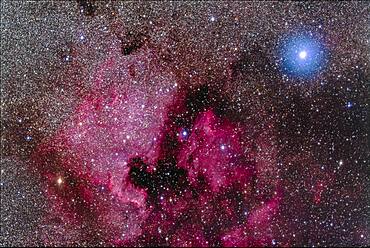Results
« Previous 1 2
128 results found
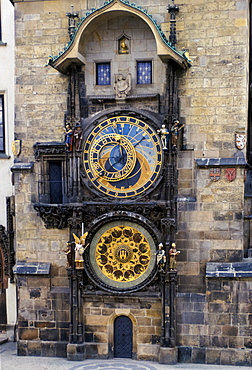
Prague Orloj, 16th Century Astronomical Clock, on the Old Town Hall in Old Town Square, Prague, Czech Republic
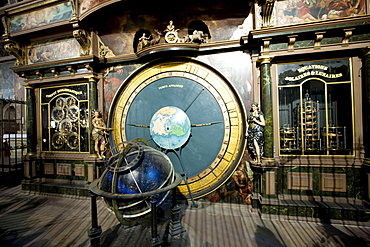
The Strasbourg Astronomical Clock in South Transept of The Cathedral of Notre Dame, Our Lady, at Strasbourg, Alsace, France
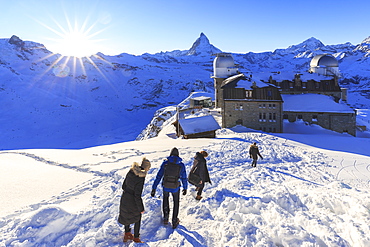
Tourists walk in the snow near the astronomical observatory of Gornergrat, Zermatt, Canton of Valais (Wallis), Switzerland, Europe
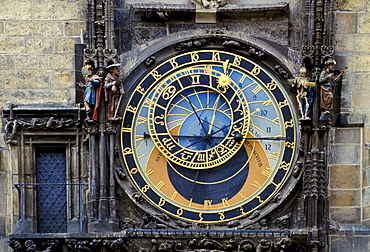
Prague Orloj, 16th Century Astronomical Clock, on the Old Town Hall in Old Town Square, Prague, Czech Republic
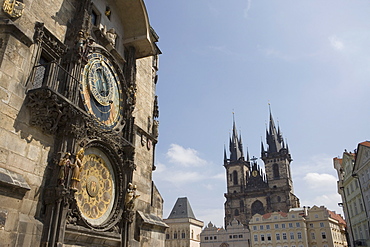
Town Hall Clock, Astronomical clock, and church of Our Lady before Tyn in background, Old Town Square, Old Town, Prague, Czech Republic, Europe
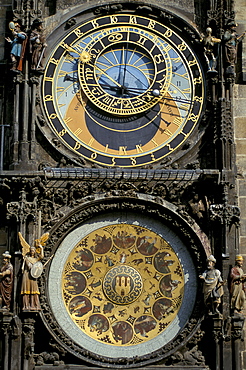
Astronomical clock, Town Hall, Old Town Square, Prague, UNESCO World Heritage Site, Czech Republic, Europe

Crowds of tourists in front of Town Hall Clock, Astronomical clock, Old Town Square, Old Town, Prague, Czech Republic, Europe

The Jantar Mantar built between 1728 and 1734 by Jai Singh II as an observatory, Jaipur, Rajasthan state, India, Asia

Close-up of the Astronomical Clock in the Old Town Square in Prague, UNESCO World Heritage Site, Czech Republic, Europe
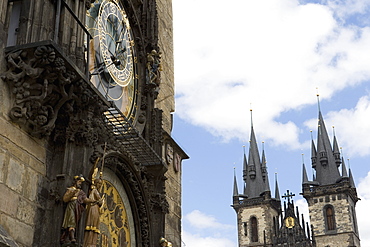
Town Hall Clock (Astronomical clock), Church of Our Lady before Tyn, Old Town Square, Old Town, Prague, Czech Republic, Europe

Circumpolar star trails over a grand old barn in southern Alberta, on a fine spring night, May 23, 2018. Illumination is from the waxing gibbous Moon to the south. This is looking north to Polaris at top right. A thunderstorm is on the northern horizon with a lightning bolt as a bonus.
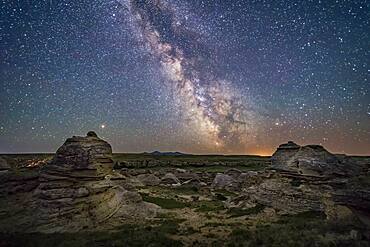
Mars (at left) and the galactic centre area of the summer Milky Way low over the southern horizon at Writing-on-Stone Provincial Park, Alberta, on June 8/9, 2018. Sagittarus is at centre, with Scorpius at right. The Messier 6 and 7 open star clusters are just above the horizon at centre, just right of the Sweetgrass Hills on the horizon in Montana.

The summer Milky Way overhead and through the Summer Triangle stars in July, looking up through trees in Banff National Park at Herbert Lake. Deneb is at top left, Vega at top right, and Altair is at bottom. The bright Cygnus star cloud is obvious. As are the dark lanes in the Milky Way, including the Funnel Nebula at top, aka Le Gentil 3.
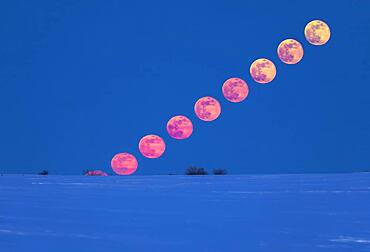
The rising of the Full Moon on Easter eve, Saturday, March 31, 2018, on a very cold night with lots of snow still on the ground in Alberta. So this is more a winter Moon than a spring one. This is the 'paschal' Moon ' the one that defines the date of Easter, being the first Full Moon after the vernal equinox. The first Sunday after that Full Moon, in this case the next day, is Easter Sunday.

A horizon-to-zenith panorama of the winter consellations on a March evening as they set into the southwest. Orion is at bottom centre, with his Belt pointing down to Canis Major and up to Taurus. Gemini and Auriga are at top, in this case near the zenith overhead. The bright star clusters, M44, the Beehive, (at left) and M45, the Pleiades, (at right) flank the Milky Way. M45 is embedded in the Zodiacal Light. The star clusters M35 in Gemini and M41 in Canis Major are also visible as diffuse spots, as are several other star clusters. A couple of satellite trails are visible.

Here's a variation on creating a time-sequence composite of the August 21, 2017 total solar eclipse.

A composite of the August 21, 2017 total eclipse of the Sun, showing the second and third contact diamond rings and Baily's Beads at the start (left) and end (right) of totality, flanking a composite image of totality itself. The diamond ring and Baily's Beads images are single images.
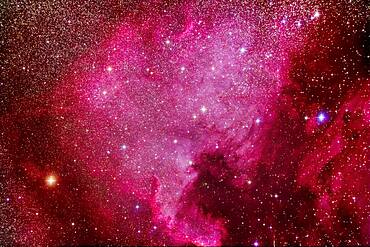
NGC 7000, the North America Nebula, with the Pelican Nebula, IC 5067, at right, in Cygnus, taken from home November 21, 2016 as part of testing of the Explore Scientific FCD100 102mm apo refractor. This is a stack of 5 x 6-minute exposures at f/7 with the ES field flattener, and at ISO 1600 with the filter-modified Canon 5D MkII. Star diffraction spikes added with AstronomyTools actions.
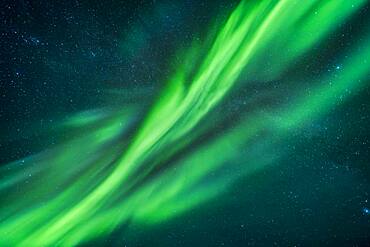
Auroral curtains at the zenith, with shades of green and cyan, from the display of September 8, 2018 taken from the Tibbitt Lake site near Yellowknife, NWT.

The waning gibbous Moon approaches the star Aldebaran at an occultation on the morning of September 12, 2017. This is a multiple exposure composite of the ingress phase that occurred before sunrise, with the Moon from the final exposure and the star from exposures taken at 4-minute intervals prior to that last exposure. For the actual ingress I switched to HD movie to shoot a video of the event.
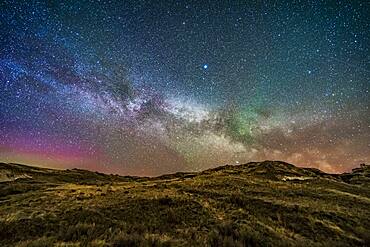
The summer Milky Way and Summer Triangle stars rising in the east at Dinosaur Provincial Park, Alberta on May 14, 2018.

View point of The Observatory Of Pic Du Midi De Bigorre, Hautes Pyrenees, Midi Pyrenees, France. The 12m Ponton dans le ciel, a glass walkway high above the Pyrenees at Pic du Midi de Bigorre, a 2877m mountain in the French Pyrenees, home to an astronomical observatory and visitors centre. The observatory is acccessible from the village of La Mongie by cablecar. Tourists often visit in time for the spectacular sunset across the mountains.

A flower-filled meadow at the Hay Barn Road at Waterton Lakes National Park, Alberta, with the summer Milky Way and Mars to the south over Waterton Valley and Vimy Peak at left.
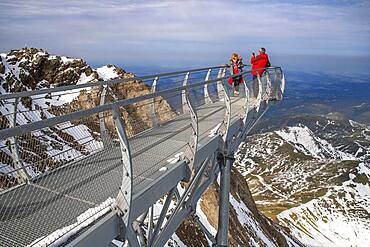
View point of The Observatory Of Pic Du Midi De Bigorre, Hautes Pyrenees, Midi Pyrenees, France. The 12m Ponton dans le ciel, a glass walkway high above the Pyrenees at Pic du Midi de Bigorre, a 2877m mountain in the French Pyrenees, home to an astronomical observatory and visitors centre. The observatory is acccessible from the village of La Mongie by cablecar. Tourists often visit in time for the spectacular sunset across the mountains.
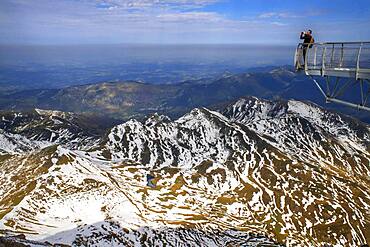
View point of The Observatory Of Pic Du Midi De Bigorre, Hautes Pyrenees, Midi Pyrenees, France. The 12m Ponton dans le ciel, a glass walkway high above the Pyrenees at Pic du Midi de Bigorre, a 2877m mountain in the French Pyrenees, home to an astronomical observatory and visitors centre. The observatory is acccessible from the village of La Mongie by cablecar. Tourists often visit in time for the spectacular sunset across the mountains.

The Sun setting into a pall of forest fire smoke over Alberta from fires in B.C. and elsewhere, on August 17, 2018. This shows the dimming and reddening of the Sun as it set, with it disappearing from view long before it reached the horizon.
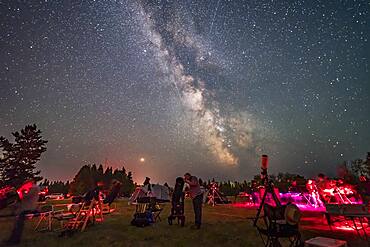
An observer gazes skyward with his Dobsonian reflector telescope at the Saskatchewan Summer Star Party on August 9, 2018, in the Cypress Hills of southwest Saskatchewan, at the Cypress Hills Interprovincial Park, a Dark Sky Preserve. The Milky Way shines to the south. Smoke in the sky obscures the horizon somewhat.
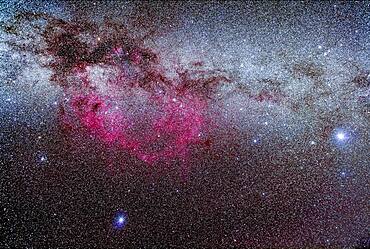
The region of the Milky Way in Puppis and Vela encompassing the vast Gum Nebula, a photographic object only. Sirius and Canis Major are at right; Canopus in Carina is at bottom. The False Cross and the open cluster NGC 2516 are at left.
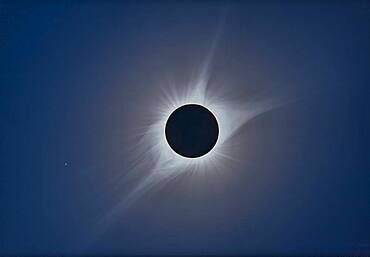
A composite of the August 21, 2017 total solar eclipse assembled using the HDR program Photomatix Pro v6.
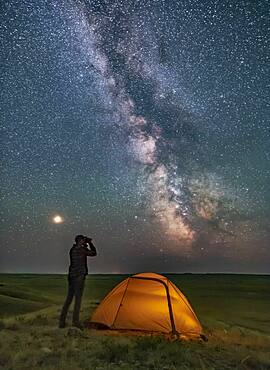
A Park interpreter poses for a scene in Grasslands National Park, Saskatchewan, of stargazing with binoculars under the Milky Way on a dark moonless night. Grasslands is perfect for stargazing as it is a Dark Sky Preserve and the horizon is vast and unobstructed.
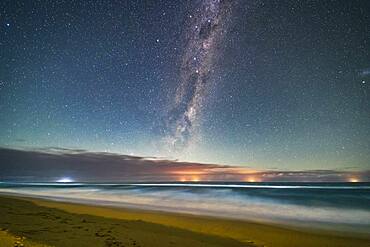
The Dark Emu of aboriginal sky lore rising in a moonlit sky over the Tasman Sea from a beach near Lakes Entrance, Victoria, Australia, April 2, 2017. Lights from fishing boats dot the horizon out at sea. Illumination is from the waxing crescent Moon behind the camera to the north. This is looking southeast. Crux, the Southern Cross, is at top; the Pointer Stars are below.

The colourful region around Antares in Scorpius, the yellow star at centre. To the right is the globular cluster Messier 4. Above right of Antares is the smaller globular NGC 6144. Above are the nebulas associated with Rho Ophiuchi. The area is filled with reflection (yellow and blue) and emission nebulas (red and pink). The field simulates a binocular field.
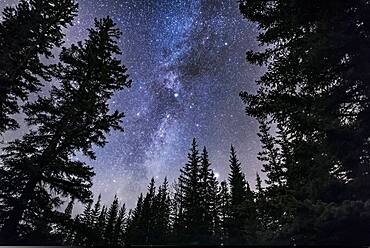
Cygnus or the Northern Cross is setting amid the pine trees at Athabasca Falls in Jasper National Park, on a late October night. Cepheus is above and the bright star Vega is low and just above the trees. Deneb is at centre, as is the dark nebula Lynds 3, the Funnel Cloud Nebula. Light cloud adds the natural star glows but also discolours the sky near the horizon.
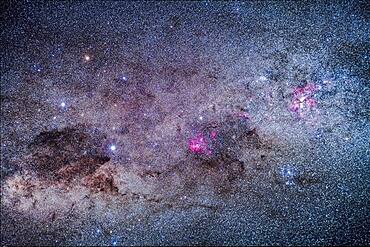
The amazing area of the southern Milky Way in Carina and Crux, the brightest part of the Milky Way after the galactic core region. At right is the Carina Nebula, with the Southern Pleiades cluster, IC 2602, below it. The Football Cluster, NGC 3532, is at upper left of the Carina Nebula. At centre is the region of Lambda Centauri, with the star cluster NGC 3766, the Pearl Cluster, above the emission nebulosity. At left is the Southern Cross, with the dark Coal Sack at bottom left of the Cross, with thin tendrils extending to the right. To the left of Alpha Cruxis at the bottom of the Cross is the star cluster NGC 4609; aboive Alpha is NGC 4649. To the left of Beta Cruxis at the left side of the Cross is the Jewel Box Cluster, NGC 4755.

The large star-forming region of IC 1396 in Cepheus, taken September 5, 2018 from home in southern Alberta. The wide field includes the bright orange star Mu Cephei, or Herschel's Garnet Star, at top. The Elephant Trunk Nebula is at centre. North is at top.

The asterism of the False Cross in Vela and Carina, at left, with Gamma Velorum, a bright blue supergiant star, at right. In between are faint arcs of nebulosity in the Gum Nebula. To the left of Gamma Velorum is the open star clister NGC 2547. Below the bottom star of the False Cross, Epsilon Carinae or Avior, is the large naked-eye star cluster NGC 2516. To the right of the right star of the False Cross, Delta Velorum, is the loose open cluster IC 2391.
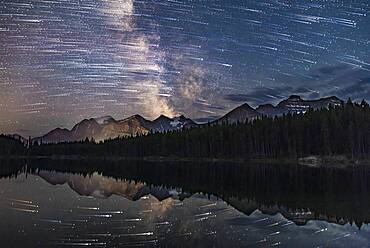
A blend of images to show the stars of the southern sky moving from east to west (left to right) over the peaks of the Continental Divide at Herbert Lake near Lake Louise, in Banff, Alberta. The main peak at left is Mount Temple.
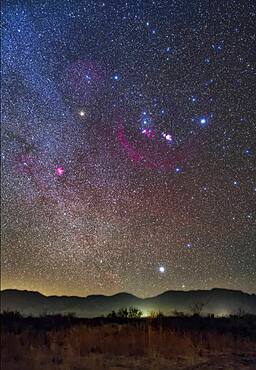
Orion and Sirius rising over the Peloncillo Mountains of southwest New Mexico, on a clear night in December in the early evening. The Belt stars of Orion point down to Sirius, the Dog Star.
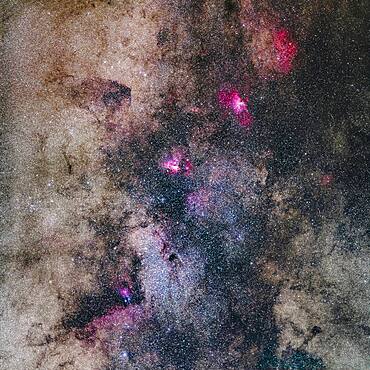
A mosaic of the rich region in Sagittarius and southern Serpens, from the Small Sagittarius Starcloud (Messier 24) at bottom to Messier 16, the Eagle Nebula, at top, with a fainter nebula above it around the cluster NGC 6604. At centre is the Swan or Omega Nebula, Messier 17. The dark nebula below centre is Barnard 92.
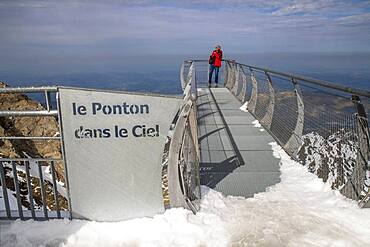
View point of The Observatory Of Pic Du Midi De Bigorre, Hautes Pyrenees, Midi Pyrenees, France. The 12m Ponton dans le ciel, a glass walkway high above the Pyrenees at Pic du Midi de Bigorre, a 2877m mountain in the French Pyrenees, home to an astronomical observatory and visitors centre. The observatory is acccessible from the village of La Mongie by cablecar. Tourists often visit in time for the spectacular sunset across the mountains.
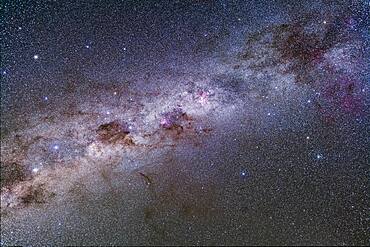
Splendours of the southern Milky Way from Vela (at top right) to Centaurus (at bottom left), including the Carina Nebula, Crux and Coal Sack, and Alpha and Beta Centauri. A part of the huge Gum Nebula is at far right. The False Cross is at right, with the large cluster NGC 2516, the Diamond Cluster, below it. The globular cluster Omega Centauri is at upper left.
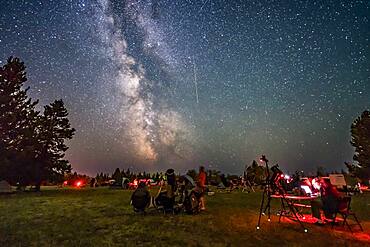
A Perseid meteor streaks down the Milky Way over the Saskatchewan Summer Star Party in the Cypress Hills of southwest Saskatchewan, at Cypress Hills Interprovincial Park, a Dark Sky Preserve. The Milky Way shines to the south. About 350 stargazers attend the SSSP every year.

A composite of the August 21, 2017 total solar eclipse showing third contact ' the end of totality ��쬆with sunlight beginning to reappear and the array of pink prominences along the limb of the Sun. Seconds later the emerging Sun and diamond ring overwhelmed the large prominence.
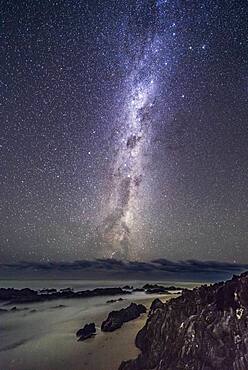
The Dark Emu of aboriginal sky lore rising out of the Tasman Sea, from the south cost of Victoria, Australia. From Cape Conran on the Gippsland Coast. Carina is just above centre, Crux, the Southern Cross is at centre, and Centaurus is below Crux. The False Cross is at top.

Mars (at left in clouds) and the summer Milky Way over Lake Herbert and reflected in the still waters this night. This is in Banff National Park, Alberta. I shot this July 17, 2018 on a night that gradually clouded up, after a run of two very good nights previous to this.
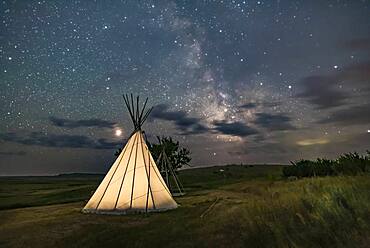
Mars (at left) and the Milky Way (at right) over a single tipi (with another under construction at back) at the Two Trees site at Grasslands National Park, Saskatchewan, August 6, 2018. I placed a low-level warm LED light inside the tipi for the illumination.
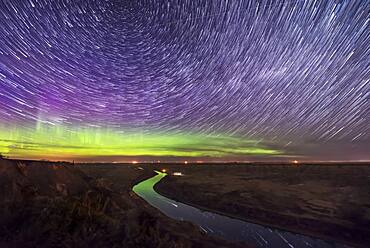
Circumpolar star trails and aurora over the Red Deer River, Alberta from the Orkney Viewpoint north of Drumheller on May 5, 2018.

The Sun setting into a pall of forest fire smoke over Alberta from fires in B.C. and elsewhere, on August 17, 2018. This shows the dimming and reddening of the Sun as it set, with it disappearing from view long before it reached the horizon.
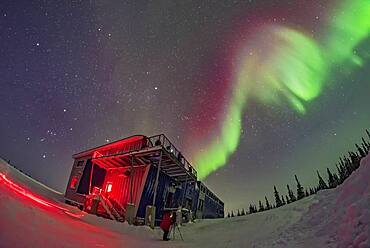
Orion and the winter sky, at left, and a swirl of colourful aurora over the Churchill Northern Studies Centre, in a display on February 11, 2018. People from the first Learning Vacations group of the season are shooting the Lights.
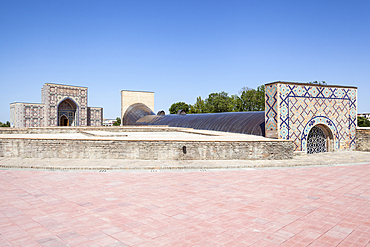
Ulugh Beg Observatory and Museum, also known as Ulugbek Observatory and Museum, Samarkand, Uzbekistan
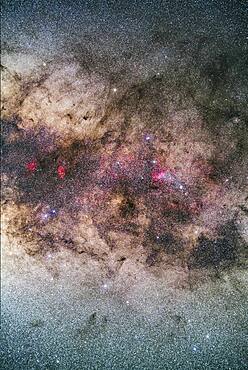
The tail of Scorpius, photographed with it high in the sky from Australia. The frame is oriented with the Milky Way running horizontally and the hook of the tail vertically.

The Northern Lights dance over the sweeping Red Deer River and Badlands of southern Alberta, from Orkney Viewpoint looking north over the valley. The Bleriot Ferry crossing is in the distance at the lights. Cassiopeia is embedded in the purple curtains. The river reflects the aurora light.

The galactic centre region of the Milky Way in Sagittarius setting behind Bow Glacier at the end of Bow Lake, in Banff National Park, Alberta.
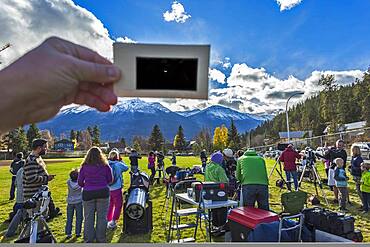
The partial solar eclipse of October 23, 2014 as seen from Jasper, Alberta, at a public event in Centennial Park as part of the annual Dark Sky Festival. This is a single-exposure image showing the scene near mid-eclipse with telescopes from volunteers from the Royal Astronomical Society of Canada, and the mostly clear skies above with the crescent Sun visible through the handheld polymer solar filter.
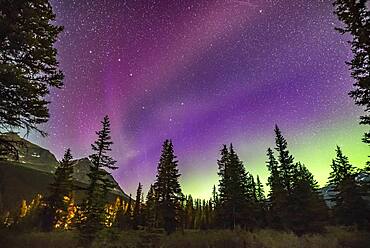
The unusual STEVE auroral arc across the northern sky at Bow Lake, Banff National Park, Alberta on the night of July 16-17, 2018. The more normal green auroral arc is lower across the northern horizon. But STEVE here appears more pink.

A Park interpreter poses for a scene in Grasslands National Park, Saskatchewan, of stargazing with binoculars under the Milky Way on a dark moonless night. Grasslands is perfect for stargazing as it is a Dark Sky Preserve and the horizon is vast and unobstructed.

A aurora group is taking their aurora selfie shots on the boardwalk at Rotary Park in Yellowknife, NWT, under a grand sweep of an auroral arc. This was September 11, 2018 under a mild display of Lights. Illumination is from the aurora and from urban lighting nearby.
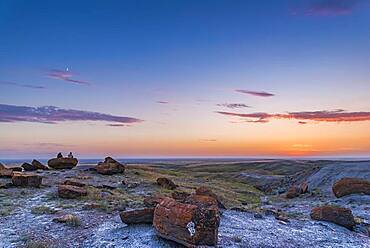
A pair of campers watch the sunset with the 4-day-old waxing Moon in the twilight sky above, at Red Rock Coulee in southeast Alberta.
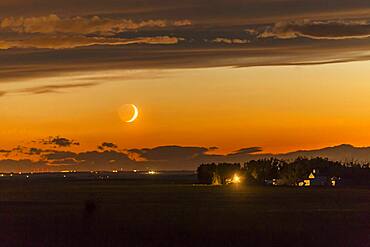
The waxing crescent Moon setting over a nearby farm, on June 26, 2017. Shot at the start of a time-lapse sequence, and shot in haste from home as the Moon appeared from beneath an otherwise very cloudy sky. The dark side of the Moon is lit by Earthshine, prominent despite the Moon's low altitude and bright twilight sky.
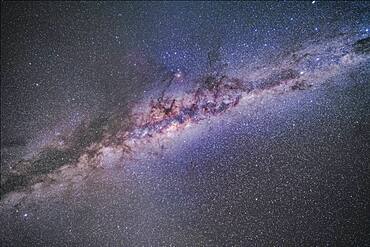
The centre of the Galaxy region in Sagittarius and Scorpius overhead in the wee hours of an April morning in Australia. At upper right are Alpha and Beta Centauri, while at lower left is Altair.
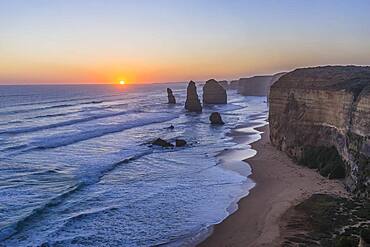
The setting Sun at the Twelve Apostles sea stacks and cliffs on the Great Ocean Road, on April 12, 2017.
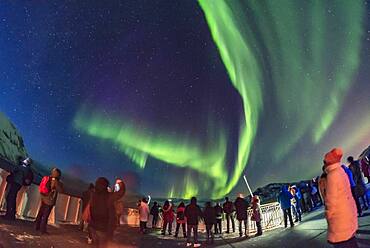
Aurora tourists taking in the sky show on March 14, 2018 from the aft deck of the Hurtigruten ship the m/s Nordnorge on the journey south, from a location north of Tromsø this night.
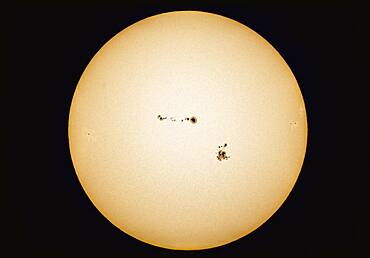
Particularly large groups of sunspots on the Sun on September 4, 2017. The group at bottom is AR 2673, the group at top is 2674. The small spot at left on the emerging limb is AR 2677, while the groups disappearing at right are AR 2675 (top) and AR 2776.

Tourists watching and photographing the sunset at the first and main Twelve Apostles viewpoint, on the Great Ocean Road, Australia.
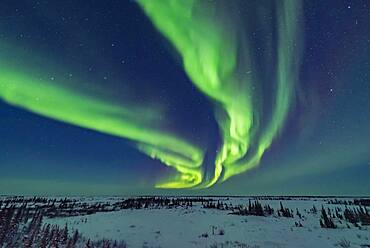
Curtains of aurora during an active storm on February 18, 2018 from the Churchill Northern Studies Centre, in the early evening in the last of the twilight. This night the aurora was brightest early in the evening. The Big Dipper is at left.

The California Nebula in Perseus, aka NGC 1499, in a set of guided exposures taken January 5, 2018 from home.

The 1910 Liberty Schoolhouse, a classic pioneer one-room school, on the Alberta prairie under the stars on a spring night, with an aurora dancing to the north. Moonlight provides the illumination. Cassiopeia is above the school. Polaris is at top.
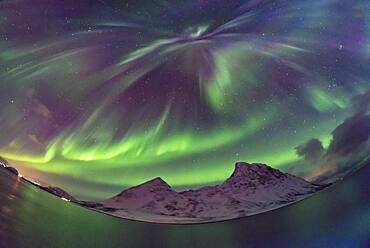
A sky-covering aurora on March 14, 2018, as seen from the Hurtigruten ship the m/s Nordnorge, as we sailed south toward Tromsø, Norway.
